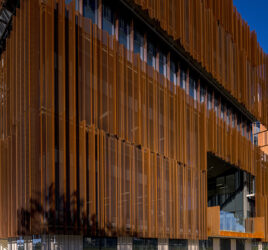
How to improve open offices with private workspaces
Our work environment plays a big part in how much we enjoy our jobs. While an open office is desirable for many, and a good way to up employee satisfaction at work, it might be wise to hold off on immediately tearing down every single internal wall. As it turns out, it’s a blend of open and private spaces that really fosters innovation and productivity.
If you’ve already reduced your office space to a singular, vast room, don’t panic. There are a number of creative metal design options to create a range of internal walls to give your employees the full spectrum of open and closed workspaces.
 Productivity benefits from a range of open and private spaces.
Productivity benefits from a range of open and private spaces.Open is good, but not for everything
According to Robert Walters’ workspace design survey, nearly half of respondents prefer an open workspace environment that has some form of acoustic and visual partitioning between work stations.
While people want to work in an open office, when it comes to productivity, the lines between open and private begin to blur. The British Council of Offices’ 2016 “What Workers Want” report revealed that similar numbers of employees (around 45 per cent) have no preference between open and private offices. In fact, the report suggests that when it comes to “significantly increasing productivity”, private offices come out ahead.
Gensler’s 2016 workplace survey seems to agree. For increased innovation and effectiveness at work, respondents rated private offices more highly than open ones. However, in terms of satisfaction, workers reported that the ability to choose between open and private workspaces was an integral part of their job satisfaction.
There are a number of way to introduce effective partitioning in open plan offices without the need to erect walls.
How to achieve a blended office space
The Robert Walters survey found that there is a strong preference for employees to have some form of visual and acoustic partitioning in their offices. This is the case regardless of size. In fact, employees in larger offices are more likely to seek out partitioned workspaces for privacy and retreat from the buzz of the normal office environment.
There are a number of ways to introduce effective partitioning in open plan offices without the need to erect walls. For example, metal partitioning in the form of woven wire mesh or perforated steel are practical alternatives to creating divisions in interior spaces. Wire mesh curtains are a great way to add depth to a room and define smaller, more private spaces without losing airflow or light.
To find out more, get in touch with the team at Locker Group today.




